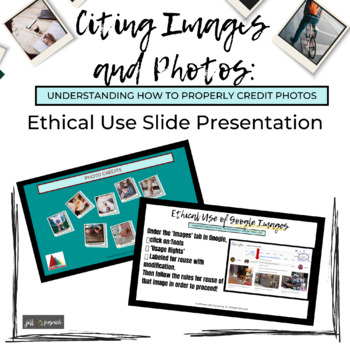- Zip
Description
Citing Images and Photos: Ethical Use Slide Deck
In an ever-growing online world, citing sources has never been as important.
Content is easy to come by, so teaching students about the ethical use of that content is imperative. As students endeavor to create reputable names for themselves digitally, citing their sources is a must!
As students tend to use videos and photos for most of their content consumption and sharing, Jill Pavich has created a slide show to help students better understand the ethical use of photos.
This PowerPoint presentation takes students through the basics of how photos on the internet should be used. This presentation is ready for classroom use, and is a great addition to any classroom that uses images in-class projects!
If you like using photos in the classroom, check out Argumentative Writing: The Photo Essay for a fun way to incorporate the organization and structure of formal writing into a ‘writing-less’ project!
Connect with us:
Website: www.jillpavich.com
Instagram: @jillpavich
Facebook: https://www.facebook.com/jillbpavich
Jill Pavich's Mission:
I empower secondary ELA teachers with the resources + mindset they need to make the writing process more relevant, authentic, and applicable for today's learners and tomorrow's leaders.



